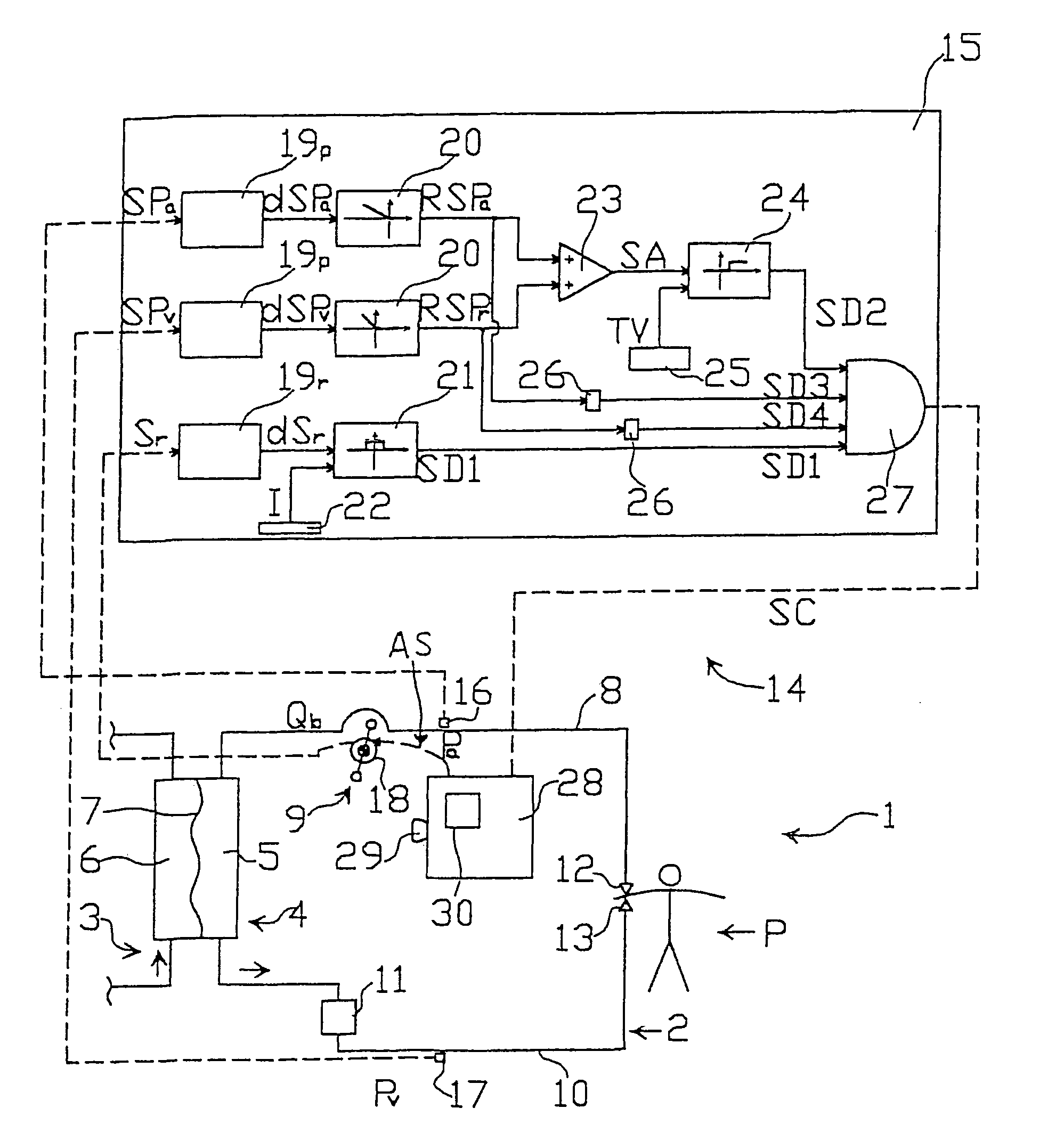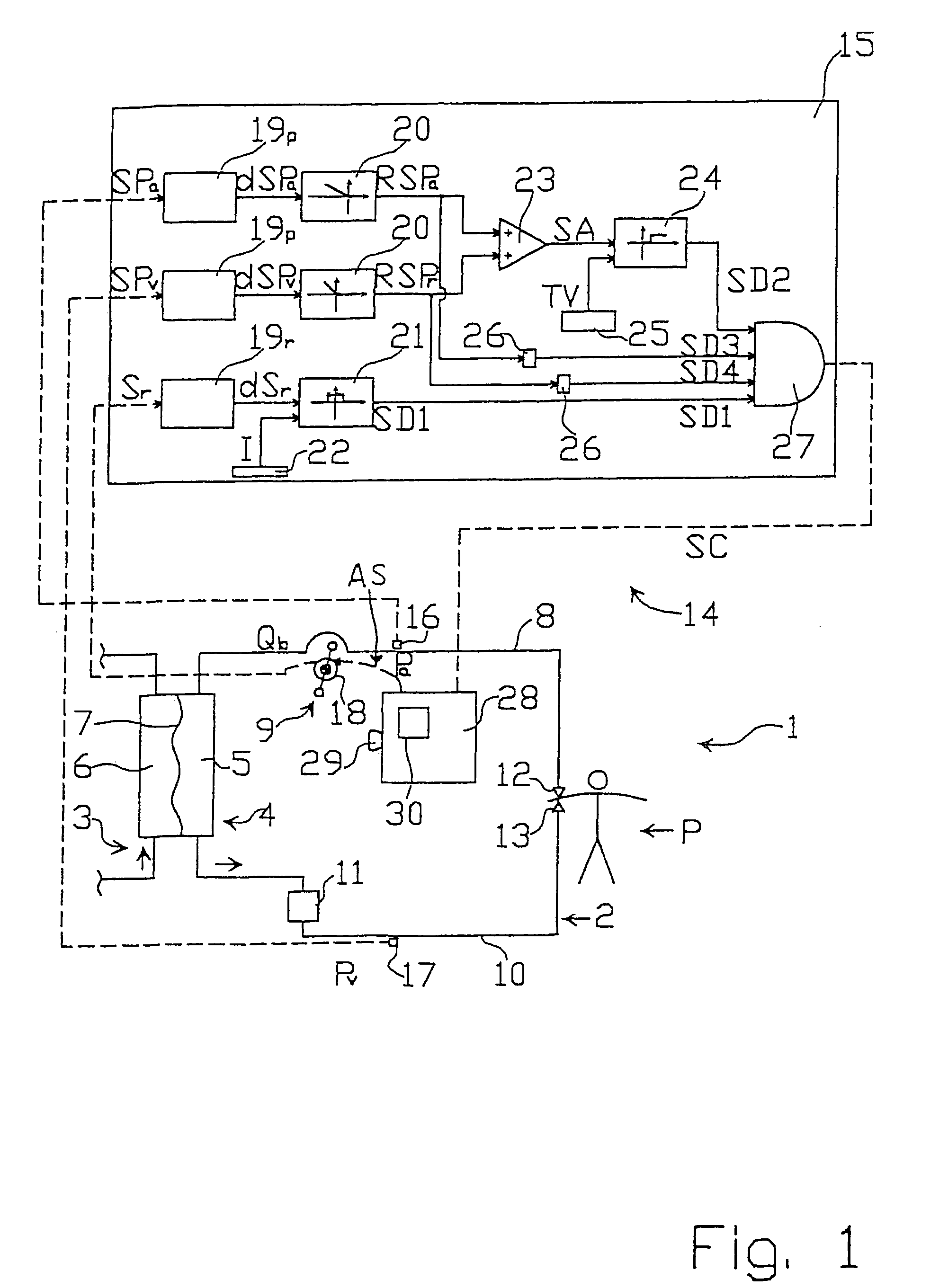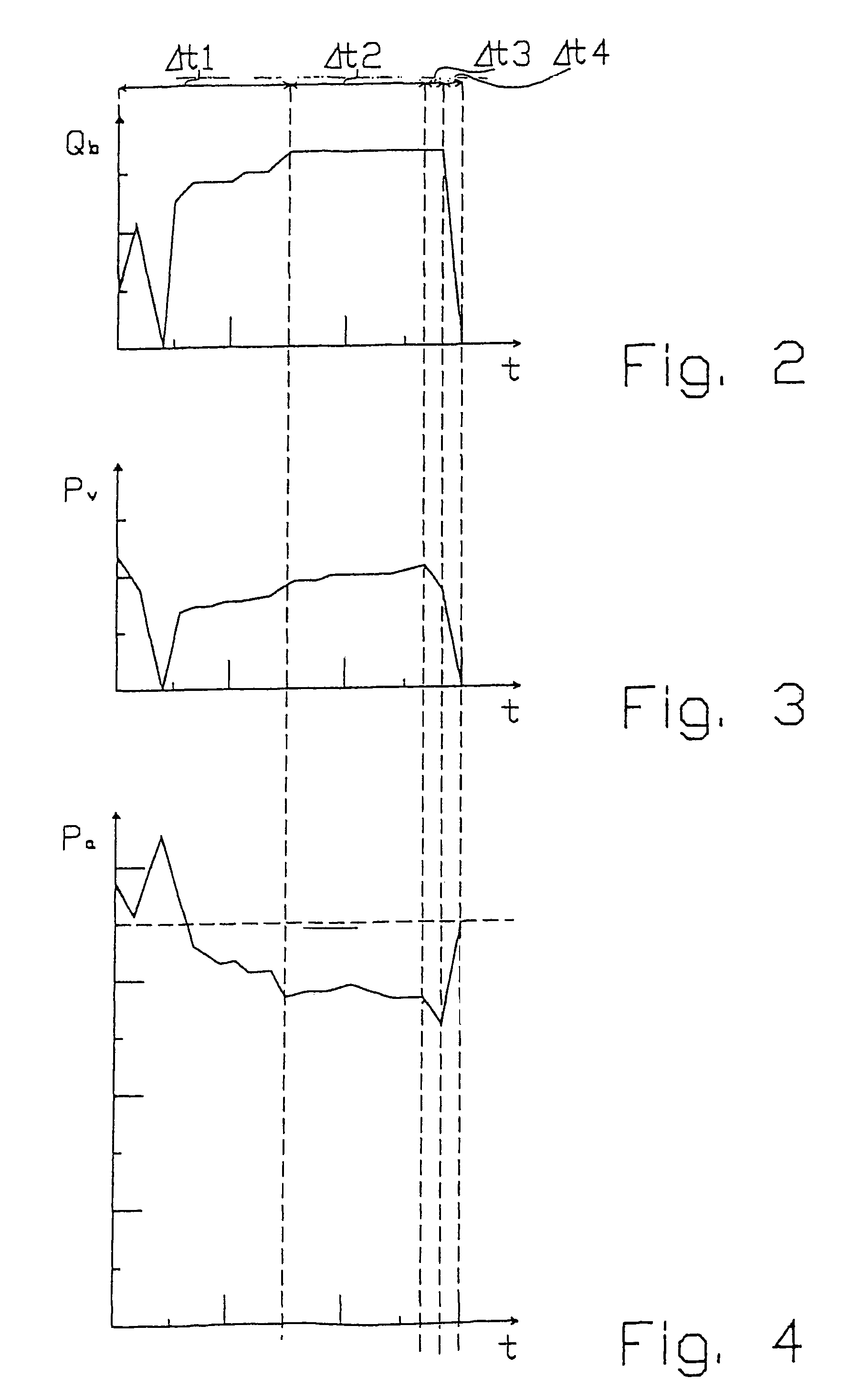Method and device for detecting the detachment of the venous needle from a patient during dialysis
a technology of venous needle and dialysis, which is applied in the field of detecting the detachment of venous needle from a patient, can solve the problems of significant blood loss in the patient, inability to provide satisfactory, and interruption of the access to the patient's cardiovascular system
- Summary
- Abstract
- Description
- Claims
- Application Information
AI Technical Summary
Benefits of technology
Problems solved by technology
Method used
Image
Examples
Embodiment Construction
[0023]In FIG. 1, the number 1 indicates the whole of a dialysis machine connected to a patient P. The machine 1 comprises an extracorporeal blood circuit 2, a dialysate circuit 3 and a filter 4, which comprises a blood compartment 5 and a dialysate compartment 6 separated by a semi-permeable membrane 7.
[0024]The extracorporeal blood circuit 2 comprises an arterial branch 8, in which is located a peristaltic pump 9 providing a flow Qb of blood, and a venous branch 10, in which is located a dropper 11. The arterial branch 8 has one end connected to the blood compartment 5 and one end provided with an arterial needle 12, which, when in use, is inserted into a fistula (not shown) in the patient P to collect the blood from the cardiovascular system of the patient P, while the branch 10 has one end connected to the blood compartment 5 and an opposite end provided with a venous needle 13, which, when in use, is inserted into the aforesaid fistula (not shown) to return the treated blood to ...
PUM
 Login to View More
Login to View More Abstract
Description
Claims
Application Information
 Login to View More
Login to View More - R&D
- Intellectual Property
- Life Sciences
- Materials
- Tech Scout
- Unparalleled Data Quality
- Higher Quality Content
- 60% Fewer Hallucinations
Browse by: Latest US Patents, China's latest patents, Technical Efficacy Thesaurus, Application Domain, Technology Topic, Popular Technical Reports.
© 2025 PatSnap. All rights reserved.Legal|Privacy policy|Modern Slavery Act Transparency Statement|Sitemap|About US| Contact US: help@patsnap.com



